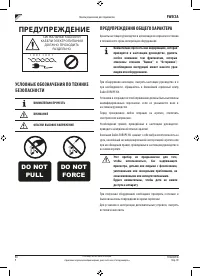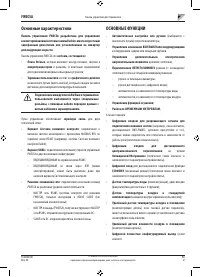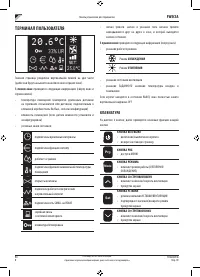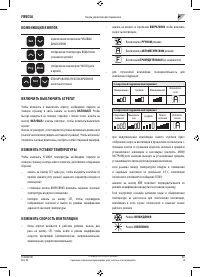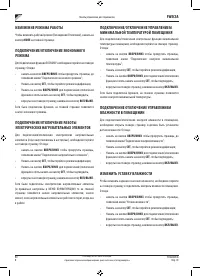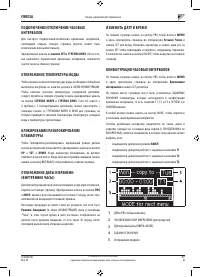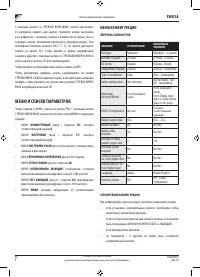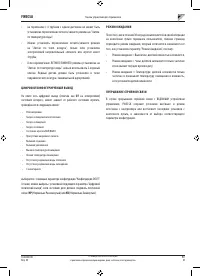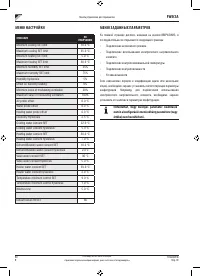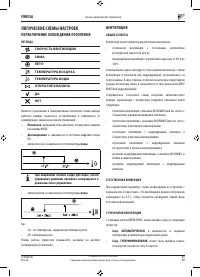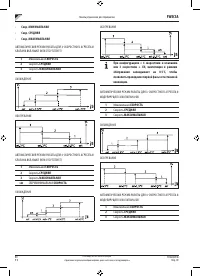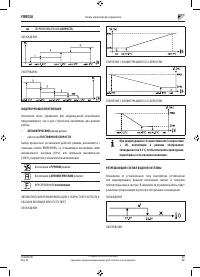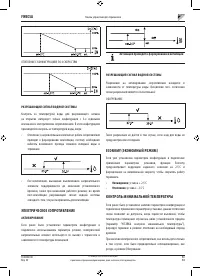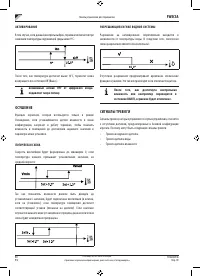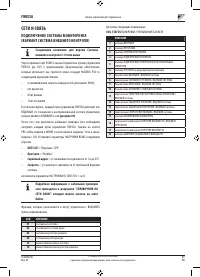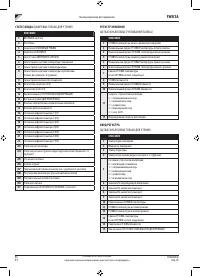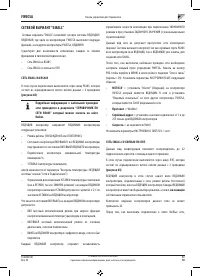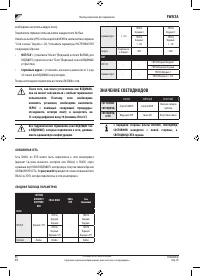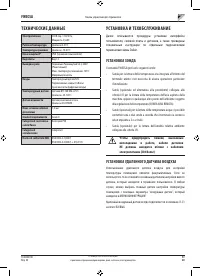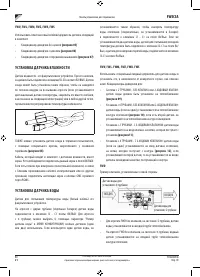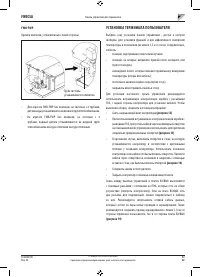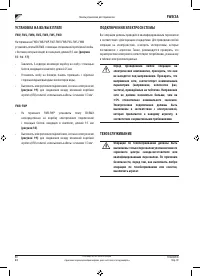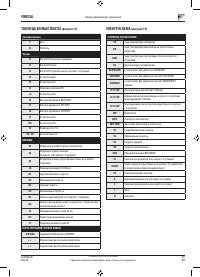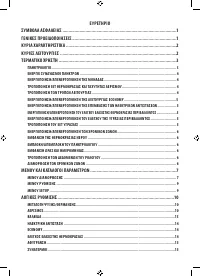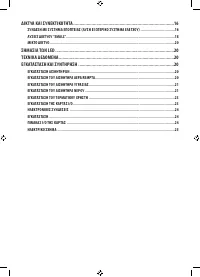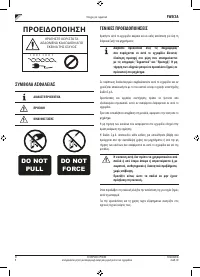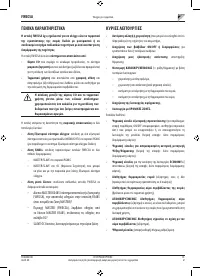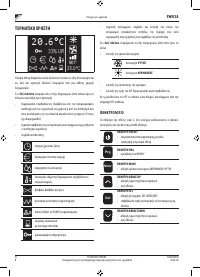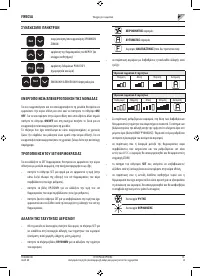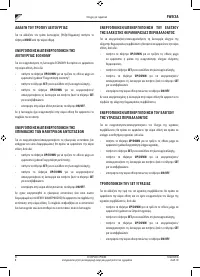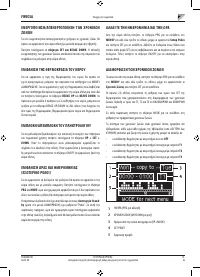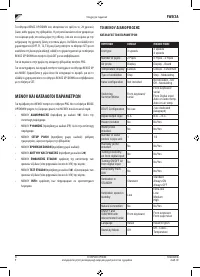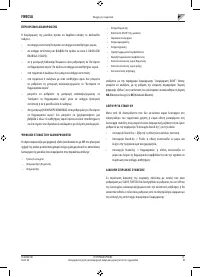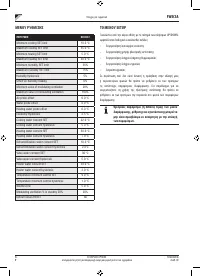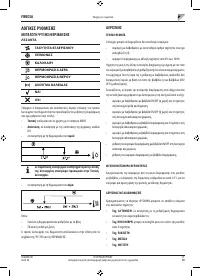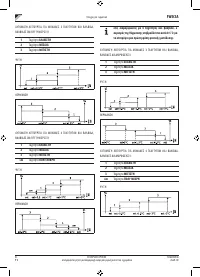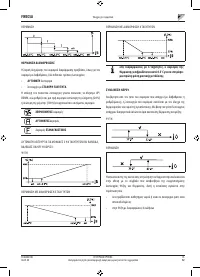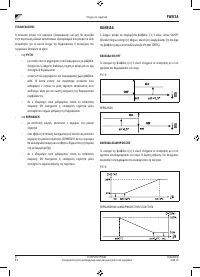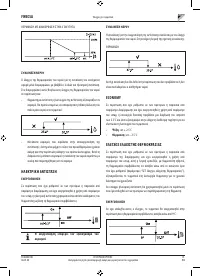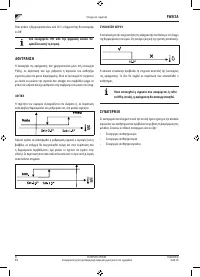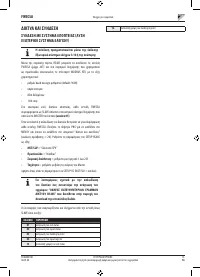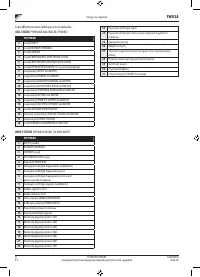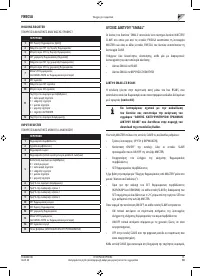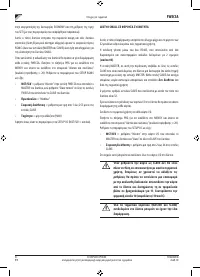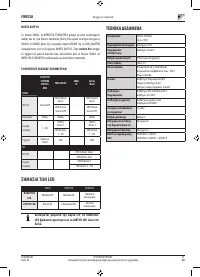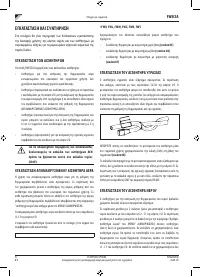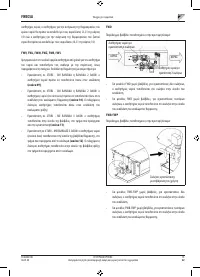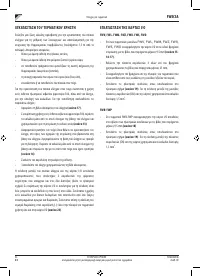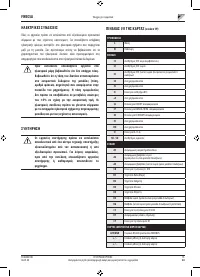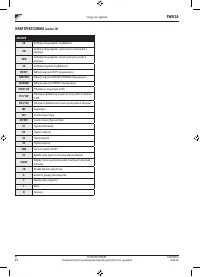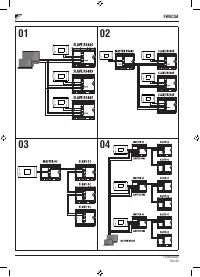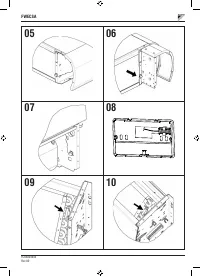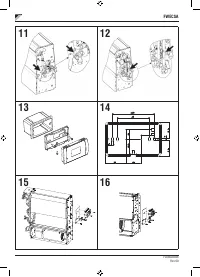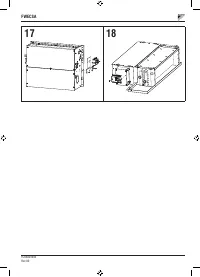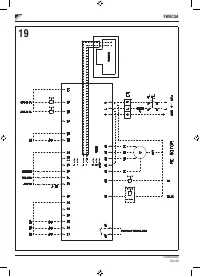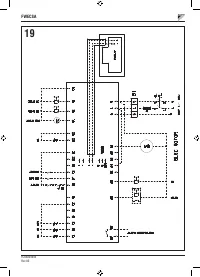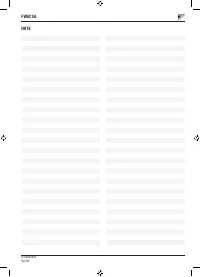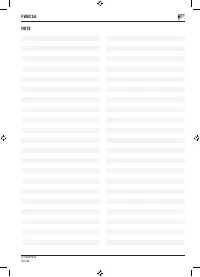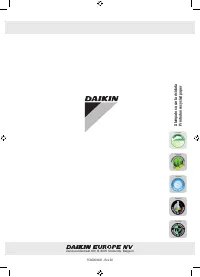Кондиционеры Daikin FWP-AT - инструкция пользователя по применению, эксплуатации и установке на русском языке. Мы надеемся, она поможет вам решить возникшие у вас вопросы при эксплуатации техники.
Если остались вопросы, задайте их в комментариях после инструкции.
"Загружаем инструкцию", означает, что нужно подождать пока файл загрузится и можно будет его читать онлайн. Некоторые инструкции очень большие и время их появления зависит от вашей скорости интернета.

FC66003946
Rev 00
USER MANUAL
It is strictly forbidden to reproduce this manual, even par tially
EN
18
FWECSA
Controller for units
“SMALL” NETWORK SOLUTIONS
“SMALL” network solutions constitute a MASTER/SLAVE
network system where one of the FWECSA controllers
performs the function of MASTER while all of the other
FWECSA controllers on the network perform the SLAVE
function.
It can be set up in two different ways, each with different
functions and type of connection:
•
SMALL network on RS485
•
SMALL network on CONVEYED WAVES
SMALL NETWORK ON RS485
In this case the connection is set up using bus RS485,
comprised of a twisted 2-conductor, shielded data cable
(figure 02)
.
For details on how to wire the network, read
“RS485 NETWORK GUIDE LINES” available in
the download area of the Daikin website.
The MASTER controller sends the following settings to the
SLAVE controller:
•
Operating mode: (COOLING or HEATING);
•
ON/OFF status of the controller: all of the SLAVE
controllers switch to the ON/OFF status of the MASTER
controller;
•
Enabling minimum room temperature control;
•
Room temperature SET;
or (based on the "Temperature control from MASTER"
parameter in the "Networks and Connections" menu):
•
Limits that apply to changes in the room temperature
SET (both SUMMER and WINTER): on each SLAVE
controller, the SET variation is allowed with a delta of ±
2°C around the value of the SET entered on the MASTER
controller.
In terms of the ON/OFF status, the following is allowed on
each SLAVE controller:
•
Automatic local ON when requested by the minimum
room air temperature control function.
•
Automatic local ON/OFF depending on the time slots,
if enabled;
•
OFF on SLAVE controller from digital input if it is
enabled.
Each SLAVE controller maintains its autonomy in managing
ventilation speed, in switching the ECONOMY function
on and in setting the SET value (with the limits described
above).
This type of network does not allow a supervision network
to be included (External Supervisor System solution) as the
RS485 serial por ts on all of the controllers (both MASTER
and SLAVE) are already occupied by the SMALL network
arrangement.
Once the network has been wired, it is necessary to configure
each FWECSA controller. Press PRG to access the MENU
and then enter sub-menu “Networks and connections”
(password = 20). Set the SETUP RS485 parameters as
follows:
•
MST/SLV
= set “Master” on the FWECSA controller
acting as the MASTER on the network, and set “Local
Slave” on all of the FWECSA controllers acting as the
SLAVEs in the network.
•
Protocol
= “Modbus”
•
Serial address
= set a value between 1 and 255, only
in the SLAVE controllers.
•
Speed
= do not change (9600)
Leave the SETUP OC PARAMETERS UNCHANGED (MST/
SLV = none).
SMALL NETWORK ON CONVEYED WAVES
This type of configuration controls up to a maximum of 32
hydronic units through a single user unit.
The connection is set up using an OC bus, comprised of a
twisted 2-conductor, shielded data cable
(figure 03)
.
In this case, the MASTER controller makes all of the SLAVE
controllers connected to the network operate (instant by
instant) in an identical fashion to the MASTER controller itself.
Accordingly, no SLAVE controller can make autonomous
decisions, nor
are they equipped with
their own user unit.
The maximum number of SLAVE controllers that can be
connected to this type of network is 32.
Before connecting the I/O boards to the network, each board
needs to be configured.
Connect the user unit to each I/O board.
Press PRG to access the MENU and then enter sub-menu
“Networks and connections” (password = 20). Set the OC
Содержание
- 218 СЕТИ И СВЯЗЬ ��������������������������������������������������������������������������������������������������������16
- 219 ПРЕДУПРЕЖДЕНИЕ; УСЛОВНЫЕ ОБОЗНАЧЕНИЯ ПО ТЕХНИКЕ; ВНИМАТЕЛЬНО ПРОЧЕСТЬ; ПРЕДУПРЕЖДЕНИЯ ОБЩЕГО ХАРАКТЕРА
- 220 Основные характеристики
- 221 ТЕРМИНАЛ ПОЛЬЗОВАТЕЛЯ; КЛАВИАТУРА
- 222 ВКЛЮЧИТЬ ВЫКЛЮЧИТЬ АГРЕГАТ
- 225 МЕНЮ И СПИСКИ ПАРАМЕТРОВ; МЕНЮ КОНФИГУРАЦИИ
- 226 ЦИФРОВОЙ КОНФИГУРИРУЕМЫЙ ВЫХОД; НР
- 227 МЕНЮ ЗАДАННЫХ ПАРАМЕТРОВ
- 228 ЛОГИЧЕСКИЕ СХЕМЫ НАСТРОЕК; ПЕРЕКЛЮЧЕНИЕ ОХЛАЖДЕНИЯ/ОТОПЛЕНИЯ
- 231 ФОРСИРОВКИ; КЛАПАН; МОДУЛИРУЮЩИЙ КЛАПАН
- 232 РАЗРЕШАЮЩИЙ СИГНАЛ ВОДНОЙ СИСТЕМЫ; ЭЛЕКТРИЧЕСКОЕ СОПРОТИВЛЕНИЕ; АКТИВИРОВАНИЕ; КОНТРОЛЬ МИНИМАЛЬНОЙ ТЕМПЕРАТУРЫ
- 233 ОС УШЕНИЕ; ЛОГИЧЕСКАЯ СХЕМА; СИГНАЛЫ ТРЕВОГИ
- 234 СЕТИ И СВЯЗЬ; ПОДКЛЮЧЕНИЕ СИСТЕМЫ МОНИТОРИНГА; Протокол
- 235 СТАТУС ВХОДА; РЕГИСТР ХРАНЕНИЯ; ВХОД РЕГИСТРА
- 236 СЕТЕВОЙ ВАРИАНТ “SMALL”
- 237 Серийный адрес; СМЕШЕННАЯ СЕТЬ; СВОДНАЯ ТАБЛИЦА ПАРАМЕТРОВ; ЗНАЧЕНИЕ СВЕТОДИОДОВ
- 238 ТЕХНИЧЕСКИЕ ДАННЫЕ; УСТАНОВКА И ТЕХОБСЛУЖИВАНИЕ; УСТАНОВКА ЗОНДА; УСТАНОВКА УДАЛЕННОГО ДАТЧИКА ВОЗДУХА
- 240 УСТАНОВКА ТЕРМИНАЛА ПОЛЬЗОВАТЕЛЯ
- 241 ПОДКЛЮЧЕНИЯ ЭЛЕКТРОСИСТЕМЫ
- 242 ЭЛЕКТРОСХЕМА


























































































































































































































